Pope Francis Asks: ‘What Moves Us’?
Homily in St. Peter's Basilica on the Feast of the Presentation of the Lord
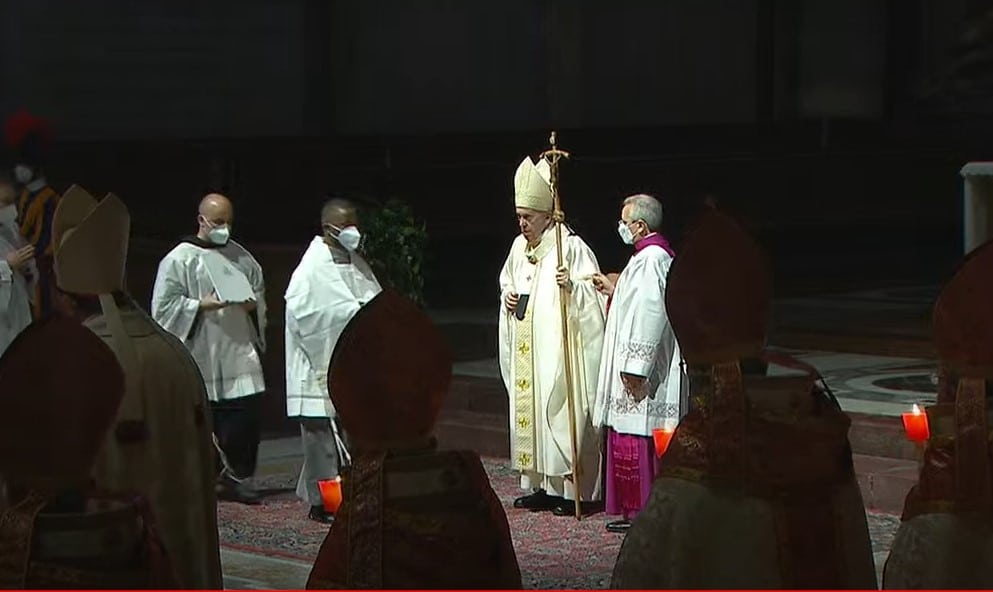
“What Moves Us”?
That was the first question Pope Francis asked today in his homily in St. Peter’s Basilica on the Feast of the Presentation of the Lord. The Pope started with the day’s Gospel passage from the second chapter of Luke, the story of the presentation, and the actions of Simeon.
As the Holy Father recalled, it was a three-step process for Simeon. First, he is moved by the Holy Spirit and goes to the temple.
Second, he sees the Child Jesus; he recognizes salvation when he sees Him. Third, he takes the child into his arms.
“We can also ask, who mostly moves us? Is it the Holy Spirit, or the spirit of this world?” The Holy Father asked. “This is a question that everyone, consecrated persons, in particular, needs to ask. The Spirit moves us to see God in the littleness and vulnerability of a baby, yet we at times risk seeing our consecration only in terms of results, goals, and success: we look for influence, for visibility, for numbers.
“The Spirit, on the other hand, asks for none of this. He wants us to cultivate daily fidelity and to be attentive to the little things entrusted to our care.”
The Pope had more questions for the congregation present in person and watching around the world:
“A second question: What do our eyes see? Simeon, moved by the Spirit, sees and recognizes Christ. And he prays, saying: ‘My eyes have seen your salvation’ (v. 30). This is the great miracle of faith: it opens eyes, transforms gazes, changes perspectives. As we know from Jesus’ many encounters in the Gospel, faith is born of the compassionate gaze with which God looks upon us, softening the hardness of our hearts, healing our wounds, and giving us new eyes to look at ourselves at our world.
“Finally, a third question: what do we take into our own arms? Simeon took Jesus into his arms (cf. v. 28). It is a touching scene, full of meaning and unique in the Gospels. God has placed his Son in our arms too because embracing Jesus is the essential thing, the very heart of faith. Sometimes we risk losing our bearings, getting caught up in a thousand different things, obsessing about minor issues, or plunging into new projects, yet the heart of everything is Christ, embracing him as the Lord of our lives.”
Simeon was elderly. His eyesight was failing and he likely has physical ailments. However, the Pope noted the joy and wonder he demonstrated in meeting Jesus.
“When Simeon took Jesus into his arms, he spoke words of blessing, praise, and wonder,” Francis said. “If consecrated men and women lack words that bless God and other people, if they lack joy, if their enthusiasm fails, if their fraternal life is only a chore, it is not the fault of someone or something else. It is because our arms no longer embrace Jesus.”
Following is the Holy Father’s full homily, provided by the Vatican:
Two elderly people, Simeon and Anna, await in the Temple the fulfillment of the promise that God made to his people: the coming of the Messiah. Yet theirs is no passive expectation, it is full of movement. Let us look at what Simeon does. First, he is moved by the Spirit; then he sees salvation in the Child Jesus, and finally, he takes him into his arms (cf. Lk 2:26-28). Let us consider these three actions and reflect on some important questions for us and in particular for the consecrated life.
First, what moves us? Simeon goes to the Temple, “moved by the spirit” (v. 27). The Holy Spirit is the protagonist in this scene. He makes Simeon’s heart burn with desire for God. He keeps expectation alive in his heart: He impels him to go to the Temple and he enables his eyes to recognize the Messiah, even in the guise of a poor little baby. That is what the Holy Spirit does: he enables us to discern God’s presence and activity not in great things, in outward appearances or shows of force, but in littleness and vulnerability. The words “moved by the spirit” remind us of what ascetic theology calls “movements of the Spirit”: those movements of the soul that we recognize within ourselves and are called to test, in order to discern whether they come from the Holy Spirit or not.
We can also ask, who mostly moves us? Is it the Holy Spirit, or the spirit of this world? This is a question that everyone, consecrated persons, in particular, needs to ask. The Spirit moves us to see God in the littleness and vulnerability of a baby, yet we at times risk seeing our consecration only in terms of results, goals, and success: we look for influence, for visibility, for numbers. The Spirit, on the other hand, asks for none of this. He wants us to cultivate daily fidelity and to be attentive to the little things entrusted to our care. How touching is the fidelity shown by Simeon and Anna! Each day they go to the Temple, each day they keep watch and pray, even though time passes and nothing seems to happen. They live their lives in expectation, without discouragement or complaint, persevering in fidelity and nourishing the flame of hope that the Spirit has kindled in their hearts.
Brothers and sisters, let us ask, what moves our days? What is the love that makes us keep going? Is it the Holy Spirit, or the passion of the moment? How do we “move” in the Church and in society? Sometimes, even behind the appearance of good works, the canker of narcissism, or the need to stand out, can be concealed. In other cases, even as we go about doing many things, our religious communities can appear moved more by mechanical repetition – acting out of habit, just to keep busy – than by enthusiastic openness to the Holy Spirit. Let us today examine our interior motivations and discern our spiritual movements, so that the renewal of consecrated life may come about, first and foremost, from there.
A second question: What do our eyes see? Simeon, moved by the Spirit, sees and recognizes Christ. And he prays, saying: “My eyes have seen your salvation” (v. 30). This is the great miracle of faith: it opens eyes, transforms gazes, changes perspectives. As we know from Jesus’ many encounters in the Gospel, faith is born of the compassionate gaze with which God looks upon us, softening the hardness of our hearts, healing our wounds, and giving us new eyes to look at ourselves at our world. New ways to see ourselves, others, and all the situations that we experience, even those that are most painful. This gaze is not naïve, fleeing reality and refusing to see problems, but one that can “look within” and “see beyond”. A gaze that does not stop at appearances, but can enter into the very cracks of our weaknesses and failures, in order to discern God’s presence even there.
The eyes of the elderly Simeon, albeit dimmed by the years, see the Lord. They see salvation. What about us? What do our eyes see? What is our vision of consecrated life? The world often sees it as “a waste”, a relic of the past, something useless. But we, the Christian community, men and women religious, what do we see? Are our eyes turned only inward, yearning for something that no longer exists, or are we capable of a farsighted gaze of faith, one that looks both within and beyond? I am greatly edified when I see older consecrated men and women whose eyes are bright, who continue to smile and in this way to give hope to the young. Let us think of all those times when we encountered such persons, and bless God for this. For their eyes are full of hope and openness to the future.
Dear brothers and sisters, the Lord never fails to give us signs that invite us to cultivate a renewed vision of consecrated life. We cannot pretend not to see them and then go on as usual, doing the same old things, drifting back through inertia to the forms of the past, paralyzed by fear of change. Let us open our eyes: the Spirit is inviting us amid our crises, decreasing numbers, and diminishing forces, to renew our lives and our communities. Let us look at Simeon and Anna: although they were advanced in years, they did not spend their days mourning a past that never comes back but instead embraced the future opening up before them. Let us not waste today by looking back at yesterday; instead, let us place ourselves before the Lord in adoration and ask for eyes to see goodness and to discern the ways of God.
Finally, a third question: what do we take into our own arms? Simeon took Jesus into his arms (cf. v. 28). It is a touching scene, full of meaning and unique in the Gospels. God has placed his Son in our arms too because embracing Jesus is the essential thing, the very heart of faith. Sometimes we risk losing our bearings, getting caught up in a thousand different things, obsessing about minor issues, or plunging into new projects, yet the heart of everything is Christ, embracing him as the Lord of our lives.
When Simeon took Jesus into his arms, he spoke words of blessing, praise, and wonder. If consecrated men and women lack words that bless God and other people, if they lack joy, if their enthusiasm fails, if their fraternal life is only a chore, it is not the fault of someone or something else. It is because our arms no longer embrace Jesus. When that happens, our hearts fall prey to bitterness, to complaining about things that do not go like clockwork, to rigidity and inflexibility, to the illusion of our own superiority. If, on the other hand, we embrace Christ with open arms, we will also embrace others with trust and humility. Then conflicts will not escalate, disagreements will not divide, and the temptation to domineer and to offend the dignity of others will be overcome. So let us open our arms to Christ and to all our brothers and sisters.
Dear friends, today let us joyfully renew our consecration! Let us ask ourselves what “moves” our hearts and actions, what renewed vision we are being called to cultivate, and above all else, let us take Jesus into our arms. Even if at times we experience fatigue and weariness, let us do as Simeon and Anna did. They awaited with patience the fidelity of the Lord and did not allow themselves to be robbed of the joy of the encounter with him. Let us put the Lord back in the center, and press forward with joy.
© Libreria Editrice Vatican
Related
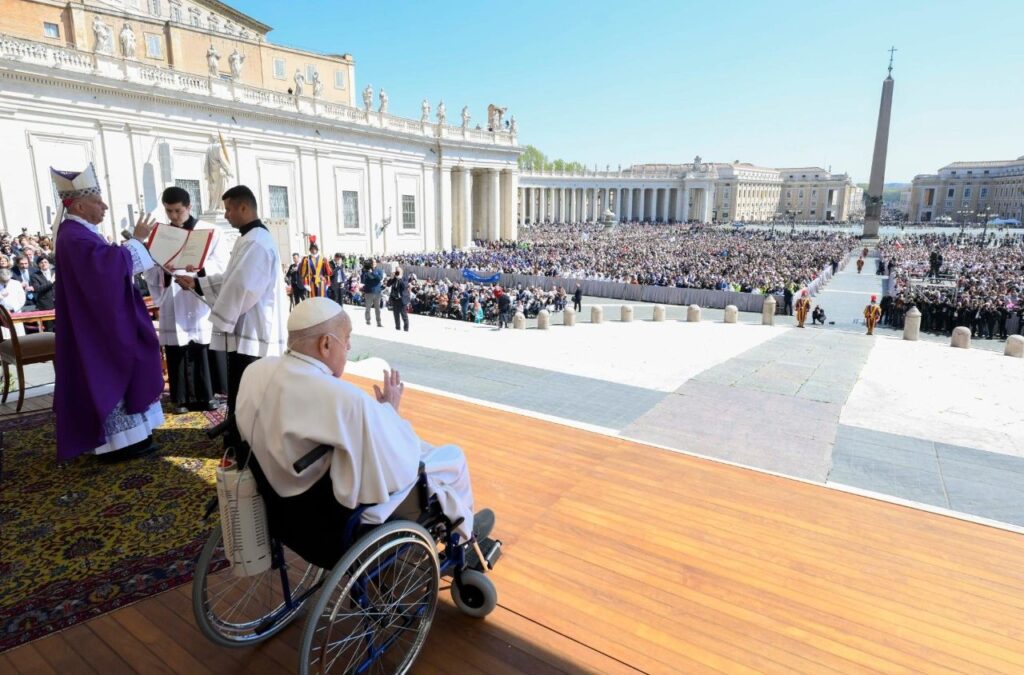
Francis is recovering: progressing progressively
Exaudi Staff
08 April, 2025
2 min
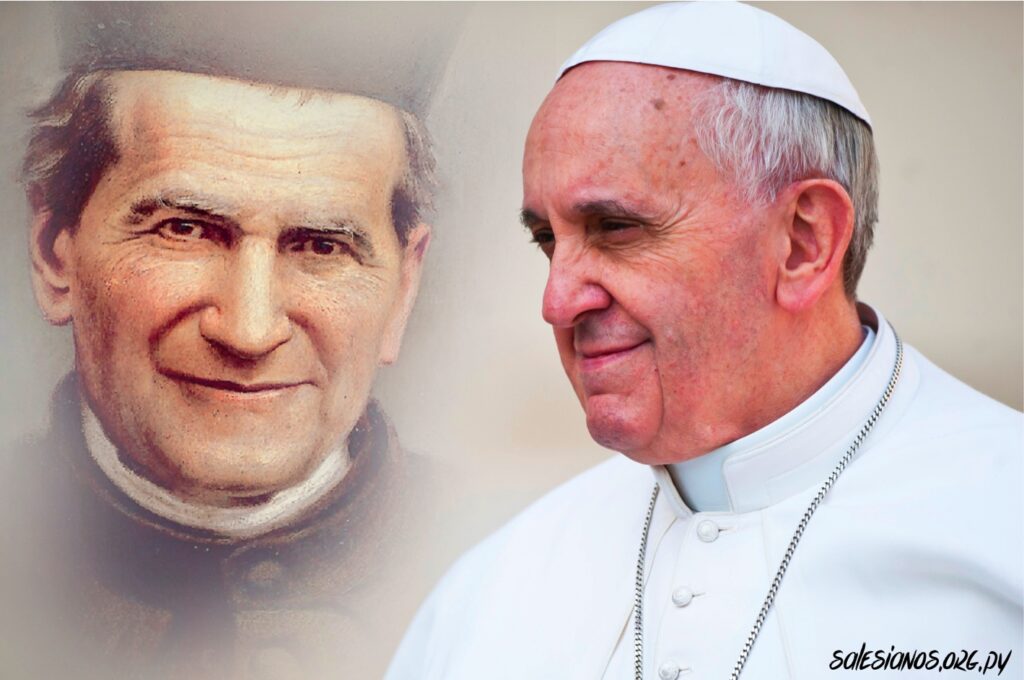
The Pope to the Salesians: “Serve others without holding anything back”
Irene Vargas
07 April, 2025
2 min
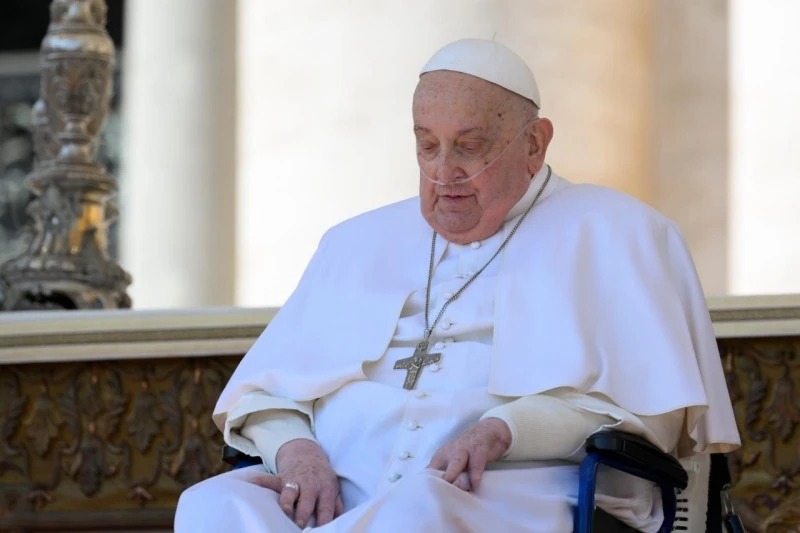
The Pope: In convalescence, I feel the “finger of God” and experience his loving caress
Exaudi Staff
06 April, 2025
2 min
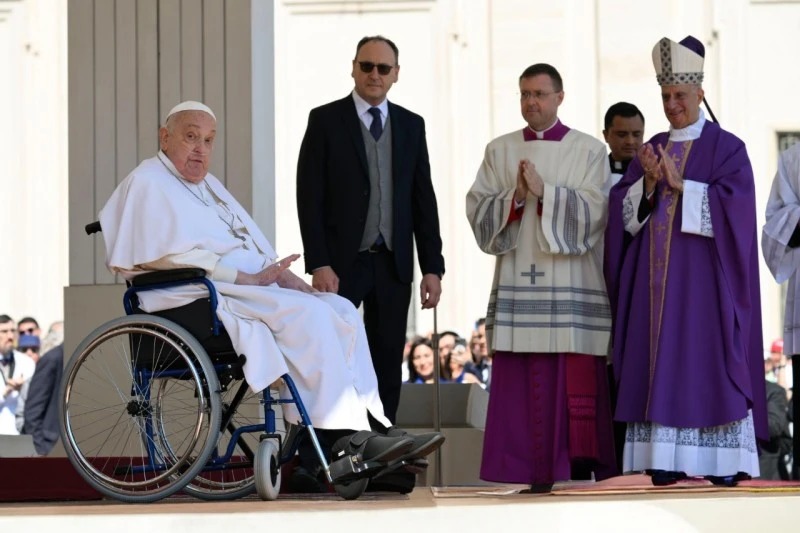
The experience of illness, a school in which we learn every day to love and to allow ourselves to be loved
Exaudi Staff
06 April, 2025
6 min
 (EN)
(EN)
 (ES)
(ES)
 (IT)
(IT)

